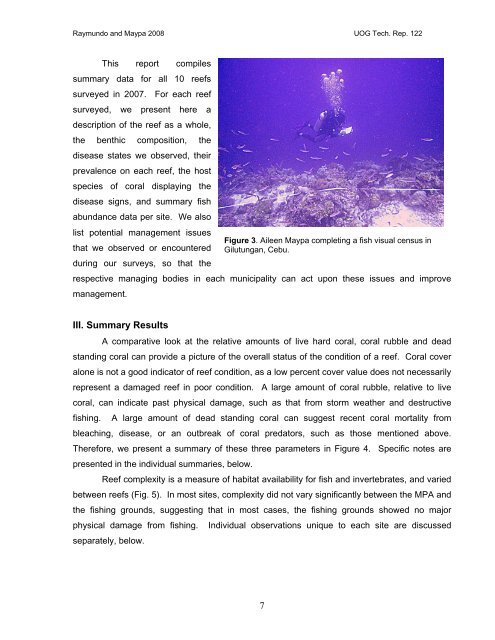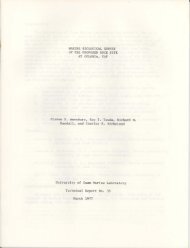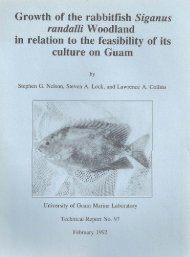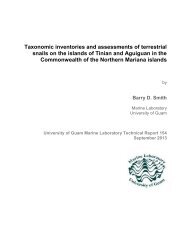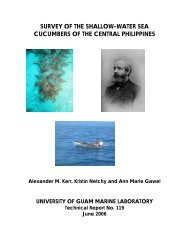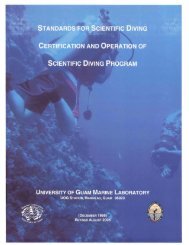Marine Protected Area Surveys Central Visayas, Philippines 2007
Marine Protected Area Surveys Central Visayas, Philippines 2007
Marine Protected Area Surveys Central Visayas, Philippines 2007
Create successful ePaper yourself
Turn your PDF publications into a flip-book with our unique Google optimized e-Paper software.
Raymundo and Maypa 2008 UOG Tech. Rep. 122<br />
This report compiles<br />
summary data for all 10 reefs<br />
surveyed in <strong>2007</strong>. For each reef<br />
surveyed, we present here a<br />
description of the reef as a whole,<br />
the benthic composition, the<br />
disease states we observed, their<br />
prevalence on each reef, the host<br />
species of coral displaying the<br />
disease signs, and summary fish<br />
abundance data per site. We also<br />
list potential management issues<br />
Figure 3. Aileen Maypa completing a fish visual census in<br />
that we observed or encountered Gilutungan, Cebu.<br />
during our surveys, so that the<br />
respective managing bodies in each municipality can act upon these issues and improve<br />
management.<br />
III. Summary Results<br />
A comparative look at the relative amounts of live hard coral, coral rubble and dead<br />
standing coral can provide a picture of the overall status of the condition of a reef. Coral cover<br />
alone is not a good indicator of reef condition, as a low percent cover value does not necessarily<br />
represent a damaged reef in poor condition. A large amount of coral rubble, relative to live<br />
coral, can indicate past physical damage, such as that from storm weather and destructive<br />
fishing. A large amount of dead standing coral can suggest recent coral mortality from<br />
bleaching, disease, or an outbreak of coral predators, such as those mentioned above.<br />
Therefore, we present a summary of these three parameters in Figure 4. Specific notes are<br />
presented in the individual summaries, below.<br />
Reef complexity is a measure of habitat availability for fish and invertebrates, and varied<br />
between reefs (Fig. 5). In most sites, complexity did not vary significantly between the MPA and<br />
the fishing grounds, suggesting that in most cases, the fishing grounds showed no major<br />
physical damage from fishing. Individual observations unique to each site are discussed<br />
separately, below.<br />
7


